#falconiformes
Text

Three friends share a carcass at Potrero Ranch outside of Kingsville, TX, USA.
Black Vulture (Coragyps atratus), family Cathartidae, order Accipitriformes
Harris Hawk's aka Bay-winged Hawk (Parabuteo unicinctus), family Accipitridae, order Accipitriformes
Crested Caracara (Caracara plancus cheriway), family Falconidae, order Falconiformes
photograph by Josefina Espinosa Salumunek
#vulture#cathartidae#coragyps#accipitriformes#hawk#raptor#parabuteo#accipitridae#caracara#falconidae#falconiformes#bird#ornithology#anmals#nature#north america
4K notes
·
View notes
Text

day 15
today's bird is the american kestrel!
- it's the smallest and most common falcon in north america!
- since they can see UV light, kestrels and other diurnal birds can see the urine trails of small mammals and follow them to their next meal
- unlike other falcons, kestrels cache their food year-round
894 notes
·
View notes
Text
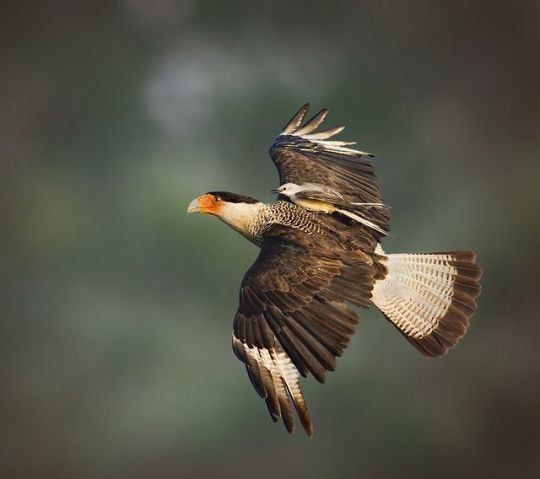
Crested Caracara & Scissor-tailed Flycatcher
#crested caracara#caracara#Caracara plancus#Falconiformes#Falconidae#scissor tailed flycatcher#flycatcher#Tyrannus forficatus#Passeriformes#Tyrannidae#Tyrannus#bird#upl
431 notes
·
View notes
Text
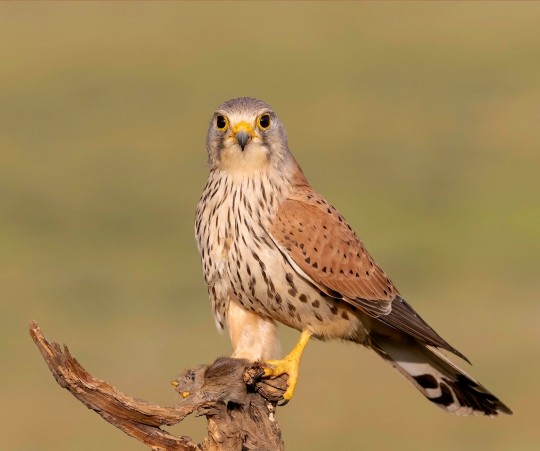
[2609/11080] Common kestrel - Falco tinnunculus
Also known as: Eurasian kestrel
Order: Falconiformes (falcons and caracaras)
Family: Falconidae
Subfamily: Falconinae (falcons)
Photo credit: Ana Mendes do Carmo via Macaulay Library
#birds#Common kestrel#Falconiformes#Falconidae#Falconinae#Falco#birds a to z#Eurasian kestrel#described
189 notes
·
View notes
Text
Taxonomy Tournament: Birds

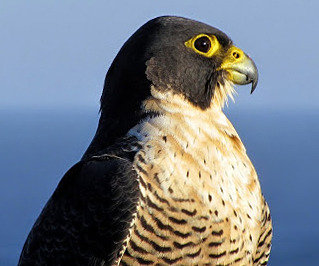
Corvides. This sub-order is made up of corvids (jays, ravens, crows and magpies), as well as small meat-eating birds of the Old World, such as currawongs and butcherbirds
Falconiformes. This order is made up of falcons and kestrels, typically solitary and often fast-flying birds of prey.
#animals#biology#polls#poll tournament#zoology#jays#ravens#crows#birds#tetrapods#falcons#Corvides#Falconiformes#0x27v0x58
276 notes
·
View notes
Text

The evolution of falcons is rather poorly understood. Thanks to genetic evidence we know that they're closely related to seriemas, parrots, and passerines, but their fossil record is patchy and little is known about the early members of their lineage.
But a group knows as masillaraptorids are giving us a rare glimpse at what some early falconiforms were up to. Known from the Eocene of Europe, these long-legged predatory birds seem to have been caracara-like terrestrial hunters specializing in chasing down prey on foot – although their wings and tails indicate they were also still strong fliers.
Danielsraptor phorusrhacoides lived during the early Eocene, about 55 million years ago, in what is now eastern England. Although only known from partial remains, it was probably around 45-60cm long (~1'6"-2'), and it had a large hooked beak with a surprising amount of convergent similarity to those of the flightless South American terror birds.
Its mixture of falcon-like and seriema-like features may indicate that the common ancestor of both of these bird groups was a similar sort of leggy ground-hunting predator.
———
NixIllustration.com | Tumblr | Twitter | Patreon
#science illustration#paleontology#paleoart#palaeoblr#danielsraptor#masillaraptoridae#falconiformes#australaves#bird#dinosaur#art
760 notes
·
View notes
Photo
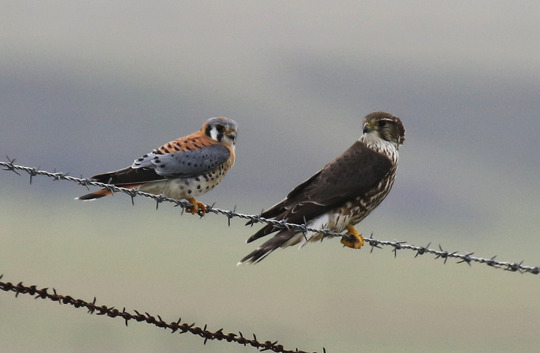
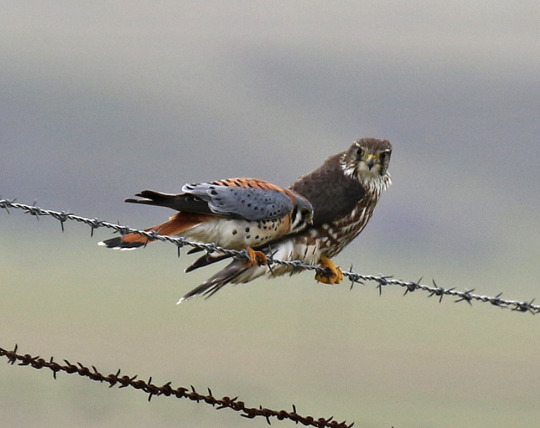
[Images Description: A male American Kestrel and a female Merlin perch closely on a barbed wire. The American Kestrel is the smaller falcon and is rufous with blue-grey on it’s outer wings. The Merlin is dark grey-brown with a dark streaked belly. In the second photo, the male moves closer as to be touching the female and bows towards her wing while she looks at him. /End ID.]
This is an apparent interspecies pairing within the genus Falco. Another record of a wild interspecific falcon pair was published in “Hybridization between a Peregrine Falcon and a Prairie Falcon in the wild” (Oliphant, 1991).
Merlin (Falco columbarius) and American Kestrel (Falco sparverius) © Robin Gwen Agarwal, posted on iNaturalist
#wildlife#zoology#ecology#falcons#birds#killy killy#iNat#nature#biology#ornithology#aves#birdblr#birblr#falconiformes#falconidae#falco#falcon#falco columbarius#falco sparverius#merlin#american kestrel#kestrel#wildlife photography#nature photography
3K notes
·
View notes
Text
Uncharismatic Fact of the Day
Despite being a bird of prey, falcons are actually more closely related to parrots than they are to hawks or eagles. In 2008 it was discovered that falcons and kestrels-- now classified in the order Falconiformes-- share a more recent common ancestor with parrots than they do with other birds of prey, which fall under the order Accipitriformes.


(Images: A rainbow lorikeet (Trichoglossus moluccanus) by Richard Taylor via Wikimedia Commons, and an American Kestrel (Falco sparverius) by Yeray Seminario)
If you like what I do, consider leaving a tip or buying me a kofi!
819 notes
·
View notes
Text
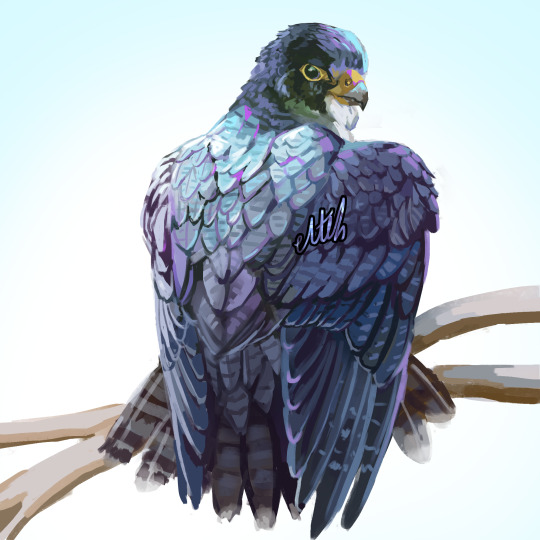
peregrine falcon study
original reference photo by owen strickland ML301852771 - Peregrine Falcon - Macaulay Library
35 notes
·
View notes
Text

Finally finished this! (I hated the sketch so I was reluctant to work on it, but I like the end result.)
Marchirp Prompt 2: Falconiformes
American Kestrel
32 notes
·
View notes
Text
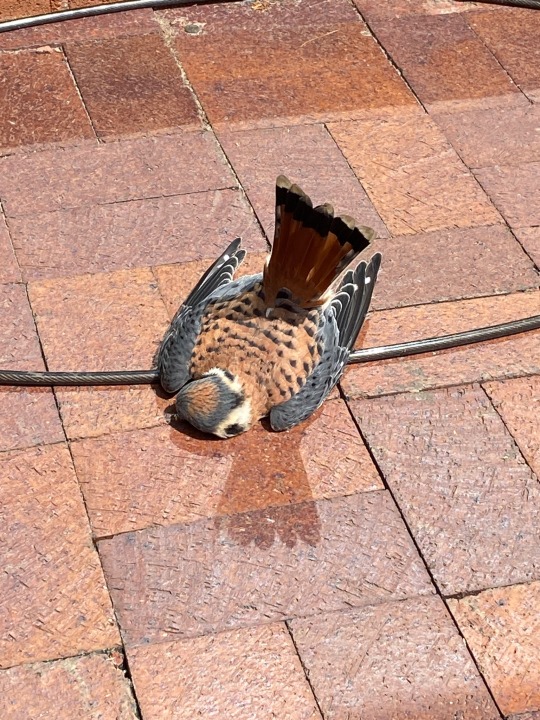
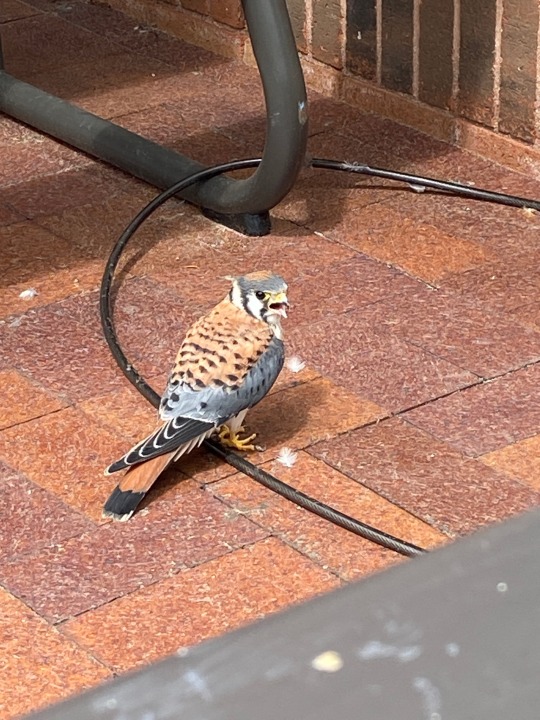
Kestrels are so cool but this is Not the circumstances I wanted to see one under. This window strike could have easily been fatal, but luckily after resting for 20min or so this fellow was able to fly away. I’m going to campaign my school to put up bird-safe window decals here; this is not the first time I’ve seen a window strike at this location and likely won’t be the last.
#campus is fairly empty rn I’m glad I was there#birds of prey#falconiformes#american kestrel#window strike#birding#bird safety#birdwatching#urban design#birds#birdblr
62 notes
·
View notes
Text
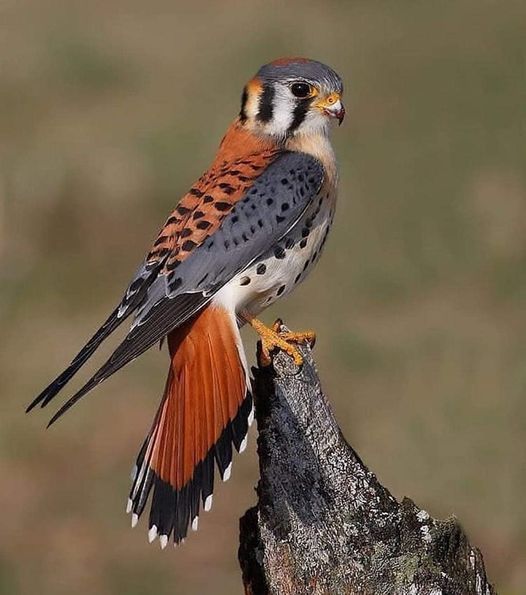
American Kestrel (Falco sparverius), male, family Falconidae, order Falconiformes, found over a great deal of North America and South America
photograph by Steve Rose (@stevenrosephotography)
1K notes
·
View notes
Photo

Peregrine Falcon (Falco peregrinus)
© Andrew Newmark
235 notes
·
View notes
Photo
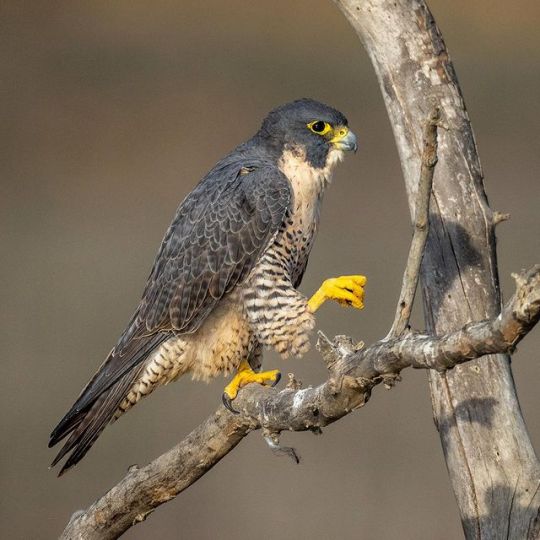
Peregrine Falcon
190 notes
·
View notes
Text
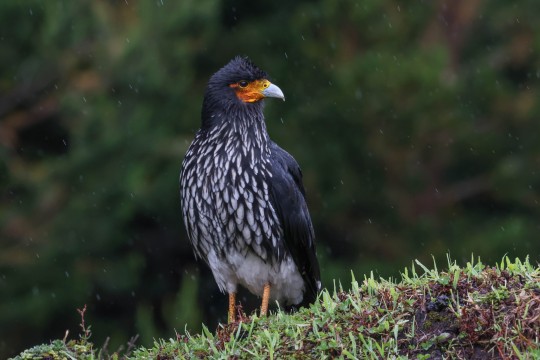
[2103/11056] Carunculated caracara - Phalcoboenus carunculatus
Note: Clements places this species in the genus Daptrius.
Order: Falconiformes (falcons and caracaras)
Family: Falconidae
Subfamily: Polyborinae (caracaras)
Photo credit: Allison Miller via Macaulay Library
#birds#Carunculated caracara#Falconiformes#Falconidae#Polyborinae#Phalcoboenus#birds a to z#described#Daptrius
334 notes
·
View notes
Text
Taxonomy Tournament: Birds


Falconiformes. This order is made up of falcons and kestrels, typically solitary and often fast-flying birds of prey.
Psittaciformes. This order is made up of all parrot species, including the kākāpō. They are among the most intelligent animals.
#animals#biology#polls#poll tournament#zoology#falcons#birds#tetrapods#parrots#Falconiformes#Psittaciformes#0x58v0xa7#animal tournament#Animal Tournament Round 1
55 notes
·
View notes